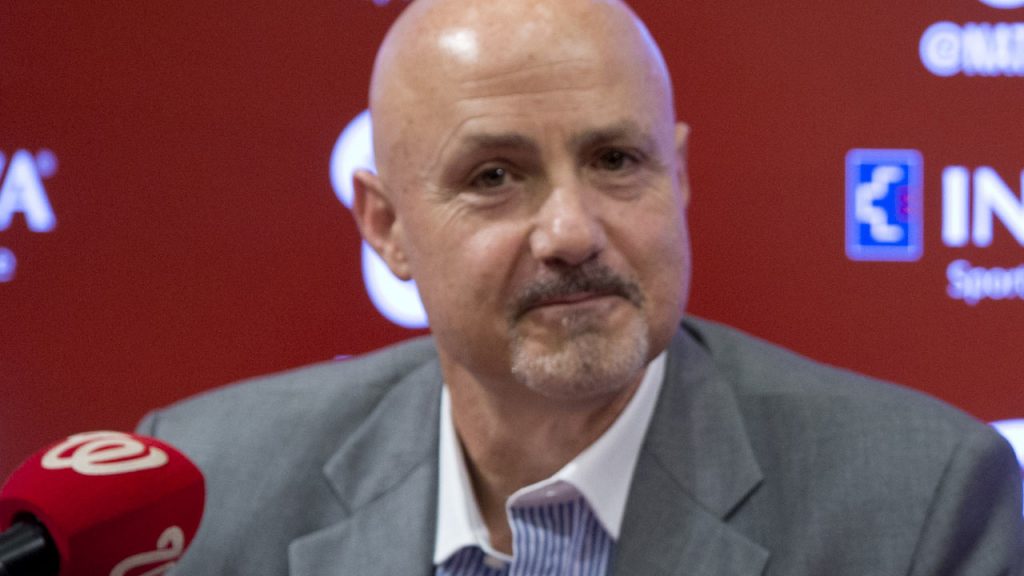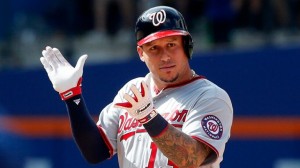
The Nats are well-known for their heavy emphasis on pitching in drafts, and then for using said pitching depth as “currency” to acquire talent to build their roster. The team has traded away more than 20 prospect pitchers in the last 5 years, ranging from recent MLB debutants to rookie-league wild-cards.
I thought I’d be interesting to check in with some of the arms we’ve moved over the past few years.
Part of me does this as a “wouldn’t it be nice if we had kept them…” motive, since not all of these trades were really ones I would have made. But nearly all of these trades contributed in one way or another to the 2019 title … so I have to temper my criticism. In the end, you’d rather have a title than a prospect. But, choices have been made over the years and some of those choices look better or worse in retrospect.
These are listed in order of MLB impact of the traded away talent, not chronologically (this list does not include all the MLB arms we traded away in the 2018 missing the playoff purge; this is mostly about trading away prospects).
- Lucas Giolito; Traded to Chicago White Sox (along with Lopez and Dunning) for Adam Eaton in 2016. Eaton gave the team 4 injury-filled years and a combined 2.7 bWAR. Giolito is now the #1 starter for the White Sox and was an all-star in 2019, but it took him several years and multiple mechanical changes to get there.
- Jesus Luzardo: traded to Oakland in 2017 (along with Treinen and Neuse) to acquire Ryan Madson and Sean Doolittle. Luzardo rose to be one of the best prospects in the game ahead of the 2020 season, now Oakland’s #2 starter as a 23yr old. Madson and Doolittle served as valuable back-end bullpen pieces, though Madson did not make it to our title-winning season and Doolittle lost his closer job by 2019 and is pitching elsewhere. This is the kind of trade i wish we made less of; you should be able to grow relievers from your farm system, not trade away future #2 projected starters for a combined 3 seasons of varying production.
- Dane Dunning was the 3rd of 3 ranked prospects in the 2016 Chicago/Eaton trade. He hovered in the top prospects list for several years, had TJ surgery, debuted with some success in late 2020 for the White Sox, then was flipped to Texas in 2020 for Lance Lynn, and is now featuring in the 2021 Texas rotation as their 5th starter.
- Taylor Hearn: was the 2nd of 2 prospects in the 2016 Pittsburgh/Melancon trade. He was subsequently flipped by Pittsburgh in 2018 for Keone Kela, and debuted for Texas in late 2019. Since, he has been an 7th/8th inning reliever for Texas with some effectiveness.
- Austin Adams, traded to Seattle in 2019 for Nick Wells after we DFA’d him. Pitched effectively for Seattle’s bullpen in 2019, then traded to San Diego in Aug 2020 for a package of players. Pitching in middle relief for San Diego in 2021. Wells has done basically nothing for this team, while Adams has at least continued to pitch in the majors and does beg the question … why couldn’t he do for us what he has managed to do for Seattle and San Diego?
Summary: well, you’d have a pretty nice start to a rotation right now with Giolito/Luzardo/Dunning. But it took years to get there for these guys: these were players who were traded 4-5 years ago. And the guys we got in return (Eaton, Doolittle) were key parts of the 2019 title team.
Minor league arms traded in last 5 years still in minors:
- Reynaldo Lopez was the 2nd ranked of 3 prospects in the 2016 Chicago/Eaton trade; he was a full time rotation starter in 2018 and 2019 for Chicago, but got beaten out for the rotation in 2021 and is in AAA. Interesting how many thought Lopez was the “prize” of that trade … now he’s like 7th on their rotation depth chart.
- Wil Crowe: traded to Pittsburgh (along with Eddy Yean) for Josh Bell. Crowe made the opening day 2021 roster for Pittsburgh, but was optioned after one poor outing. Likely projecting as a 4-A type starter, and future analysis of this trade will have to remember that Pittsburgh was in a salary dump mode when evaluating whatever Crowe and Yean become.
- Jefry Rodriguez, traded (along with Johnson and Monasterio) to Cleveland for Yan Gomes in 2018. Pitched for a couple months in the Cleveland rotation in 2019, hit free agency in 2021, signed MLFA with Washington in 2021, likely in AAA. Probably safe to say the Nats are coming out on top of this move.
- Taylor Guilbeau: traded to Seattle for Roenis Elias in 2019. Pitched for Seattle MLB middle relief in 2019 and 2020, DFA’d and outrighted in Feb 2021. Elias got lit up, got hurt and was essentially useless for us.
- Trevor Gott; traded to San Francisco in 2019 for cash after we DFA’d him; he pitched for SF’s bullpen for two years, was DFA’d and outrighted in Feb 2021. Once again, like with Adams … how is it that Gott couldn’t break our crummy 2019 bullpen but then pitched effectively for another organization immediately upon his exit from Washington? its like Blake Treinen all over again.
- Pedro Avila was traded to San Diego for Derek Norris in 2016; he rose in the ranks and debuted briefly for San Diego in 2019, then was subsequently DFA’d and outrighted; he remains in their minor league system and projects for AAA in 2021. Norris was originally drafted by DC, and they wanted to get him back. But he only lasted another 3 months with the team, getting released in spring training 2017 before catching on with Tampa for one more season.
- Aaron Fletcher: traded to Seattle for Hunter Strickland in 2019. Likely in AAA in 2021. Strickland … wasn’t good for Seattle in 2019 and he wasn’t good for us either.
- Mario Sanchez: traded to Philadelphia for Jimmy Cordero in 2016. Hit MLFA in 2018, came back to Washington, projected AA in 2021. Cordero was crummy for us, then got DFA’d, selected and was gone.
- Yohanse Morel, traded (along with Gutierrez and Perkins) to Kansas City for Kelvin Herrera in 2018. Likely in High-A in 2021.
- Kyle Johnston: traded to Toronto for Daniel Hudson in 2019. Likely in High-A in 2021. Hudson closed out game 7 of the 2019 World Series; enough said.
- Tyler Watson, traded to Minnesota for Brandon Kintzler in 2017. Likley in High-A in 2021. Knitzler was (possibly) scapegoated in the infamous clubhouse blowup mid 2018 and was dumped for pennies on the dollar in 2018.
- Ryan McMahon; traded to Minnesota for Ryne Harper in 2020; Likely in Low-A in 2021. Harper has really yet to do much, so this is a show-me trade.
- Eddy Yean; traded to Pittsburgh (along with Crowe) in 2020; projected to pitch in GCL or Low-A in 2021.
Summary: I see several really good moves here, a couple that didn’t work out as well for the Nats, and some that are preliminary. About what you expect when you’re trading prospect arms.
Minor League Arms traded in the last 5 years who are now apparently out of baseball.
- McKenzie Mills: traded to Philadelphia for Howie Kendrick in 2017. Struggled in AA in 2019 for Philadelphia, released in big Minor league purge in June 2020 and out of baseball. This was a prime example of the Nats selling high on a guy; Mills blew that summer, going 12-3 for the 2017 season, then never replicated that success and was out of baseball two years later. Odd that the team didn’t try to pick him back up after his 2019 release.
- Jeffrey Rosa; traded to Tampa Bay for Enny Romero in 2017. Struggled for Tampa’s GCL team in 2018 and was released.
- Mick VanVossen, traded to Chicago WS for Ryan Raburn. struggled in high-A in 2017, likely released that off-season (he has no stats since 2017).
- Felipe Rivero, traded to Pittsburgh (along with Hearn) in 2016 for Mark Melancon. Changed his name to Felipe Vazquez, replaced Melancon as Pittsburgh’s closer and was dominant, a 2-time all-star in 2018 and 2019. However, he was arrested on child sex abuse charges at the end of the 2019 season and faces multiple felonies in multiple states. As much as I hated this trade at the time (we gave up two solid players for yet another veteran closer since our team for reasons inexplicable cannot home grow closers ourselves), I think we’re all happy to have dodged a bullet w/r/t what Rivero/Vazquez became.
Did I miss anyone?








